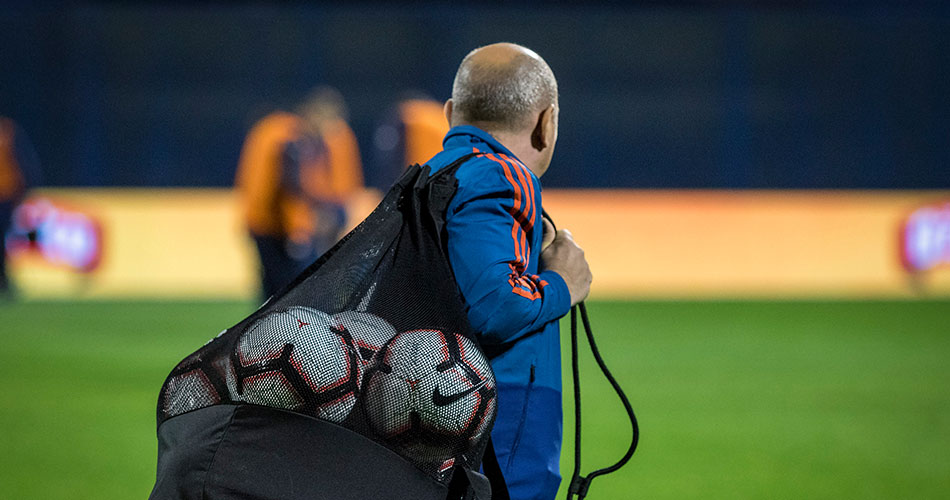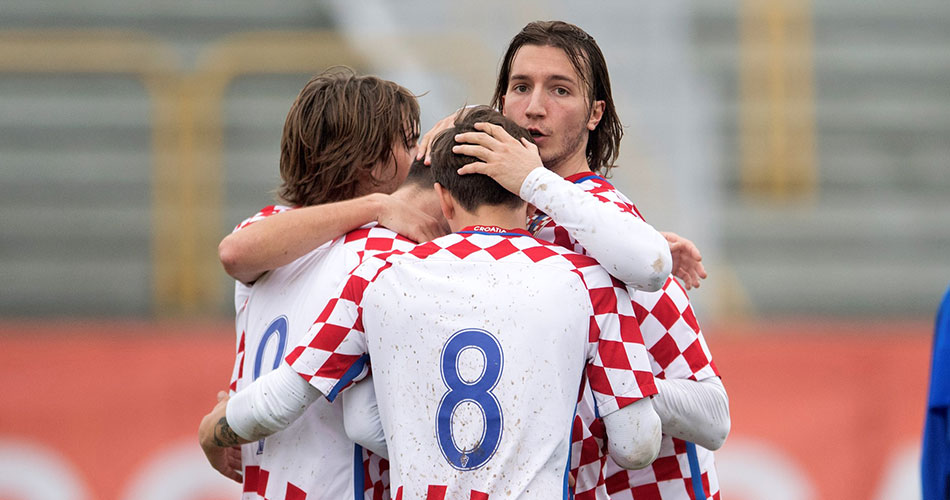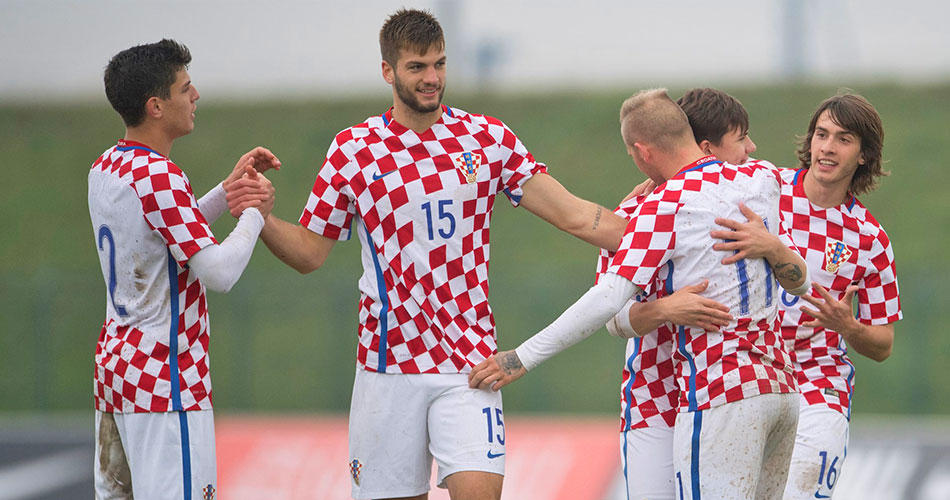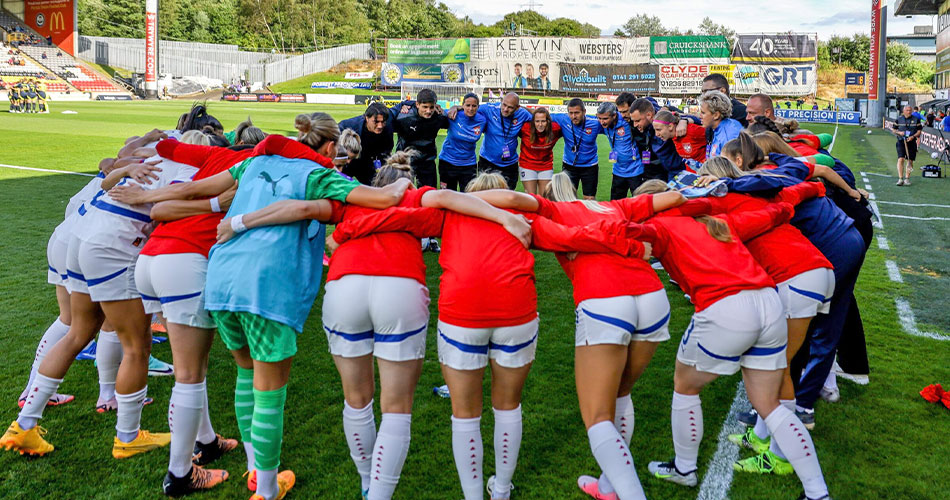Insight from the Croatian Youth National Football Team – Part 1
Watching Mladen’s video on his experience with the Serbian national women’s team (which I highly recommend to everyone due to its practical insights), I became inspired to write my own reflection on my experience with the Croatian youth national team. The blog will cover several segments, including:
- Challenges we faced during the camps
- Roles in National Team
- Pre-camp activities
- In-camp activities and Post-camp activities
- Programing
- Gym work
- Testing
- Monitoring methods and data sharing
- Recovery strategies
1. Challenges we faced during the camps
When working with a national team, the role of a strength and conditioning coach differs significantly from that of a club coach. One major difference is that the time with the team is limited to short training camps, typically lasting 7 to 14 days, during which 2 to 3 matches are played. Besides the tight schedule, another challenge arises from the lack of detailed information on the players’ fitness levels (or their current status) before they arrive at the camp. Additionally, players arrive in varying physical states depending on their recent club activities. For instance, on the first day of camp, we often had three to four groups of players with different training needs: some had played a match three days before camp, others two days before, some just the day before, while some had played fewer minutes or none at all.
Football is a team sport, but the team is made up of 11 or 25 individuals who must collaborate and work together seamlessly. Each player brings unique skills and characteristics, but the key to success is their ability to function as one cohesive unit.
Another concern I faced was data consistency and the method of data collection, as well as making meaningful conclusions from it. During the training camp, we typically had 25 players from 20 to 25 different clubs, each using their own methods of collecting performance data. The challenge was that the data was often sent in different formats, making it time-consuming to analyze each player’s data individually. This lack of standardization complicated drawing insights and making informed decisions on players’ fitness and readiness for training sessions and matches. Some clubs use different parameters, GPS units, or software, which means the data doesn’t always align easily 😄. This added yet another layer of complexity, as we had to account for variations in metrics and data presentation.Having to translate or interpret this data into a standardized format was a task in itself, making it harder to streamline the analysis and ensure we were evaluating the players on a level playing field. Putting that aside, I can’t speak highly enough of the clubs and coaches I’ve collaborated with. Every single one of them has been open and eager to work together, and I want to take this opportunity to express my gratitude for their cooperation. I’d especially like to give a shoutout to our colleagues in Croatian clubs, who are doing a great job. Their support and readiness to share information have truly made a difference in managing the complexities.
2. Roles in National Team
Organisation
When discussing roles within a football team’s staff, each position plays a key part in the team’s daily success. From the head coach, assistant coaches, and goalkeeper coach, to analysts, S&C (strength and conditioning), physiotherapists, doctors, kit managers, and support staff, all contribute to providing players with optimal conditions. I want to focus more on strength and conditioning role here.
If I had to define roles in a high-performance setup, the structure would look something like what’s presented in Figure 2.

Figure 1. The complexity of integral Sport Preparation System (Modificated from Jukić et al.,2020)
In our football federation in Croatia, strength and conditioning coaches cover all age categories (one S&C per category), with a coordinator ensuring every aspect of the work is done to a high standard. One key role I’d highlight is the Return to Sport Coach, responsible for players coming back from injury. This role is fascinating as it encompasses conditioning, biomechanics, physiotherapy, and functional anatomy, while addressing psychological challenges faced by recovering players. Though rare in national teams, if there are two S&C coaches, one can specialize in this area.
Another vital role, mentioned by Mladen in his video, is the Performance Manager, who oversees the broader aspects of performance management within the team.
The idea behind the role of a performance manager should be to take care of all players across various national teams who train in clubs, ensuring constant communication with the clubs and monitoring the players’ progress and condition. Naturally, this is a large task for one person, but if sectors are organized regionally, and individuals are responsible for specific regions, the job could be simplified. This approach might also ease the gathering of information and collaboration with clubs. Over time, this would lead to the creation of a centralized database where all information can be stored in the same format.

Figure 2. The idea for structuring High-performance Headquarters
This would simplify the work of coaches in defining a player’s status, as all necessary information would be in one place, allowing them to assess the player’s status. Additionally, for scouting or selecting players, all players in the pool could be monitored, and their data could be stored long-term, facilitating tracking their progress over the years if this system is maintained. By incorporating performance data, injury history, testing results, game statistics, and other factors, various forms of analysis would become possible, leading to informed decisions based on a comprehensive understanding of the players.
Responsibilities of strength and conditioning coaches
Realistically, it’s challenging for one person to cover everything at a high level due to the numerous tasks that must be addressed. Throughout my career, I often found myself as a “jack of all trades”—handling everything from analysis, testing, data processing, and rehabilitation, to consulting on nutrition and recovery methods. Initially, I saw this as a weakness. Now, I see it as an advantage because it gives me a broader understanding of all aspects of a high-performance environment. As a S&C coach during national team gatherings, we had a wide range of responsibilities to ensure that players were in top shape and ready to perform.
Here’s a breakdown of the key tasks:
- Individual Player Routines
- Pre-Training Activities
- Team Integration in Game Model
- Post-Training Recovery
- Monitoring via GPS
- Assess Internal Responses
- Training Interventions
- Rehabilitation
- Reporting
- Match Day Protocols
- Player Education
- Communication with Clubs
Pre- camp activities
Before each gathering, the medical team and the conditioning staff speak with clubs and players about their training status and injury records. From a S&C perspective, I was personally interested in the players’ condition one month before the gathering, two weeks before the gathering, one week before the gathering, and, of course, information just before the gathering, which includes one to two days prior. Monitoring matches and the minutes players had played during that period and just before the gathering helped us a lot. This group of activities also includes the issues I mentioned earlier, such as data centralization and standardization of reports, which would make the decision-making process about the players’ condition at the time of the gathering easier. From my side, a form (which I will provide as an example of the information I was interested in) was sent to the clubs, asking them to fill it out and send it back if they collected any of the information listed in the form.

Figure 3. Example of the pre-camp form for clubs (one segment of it)
Of course, before the actual gathering, communication among the coaching staff was ongoing throughout the entire period between gatherings, and meetings were held just before the gathering to share all the collected information.
A good speech should be like a woman’s skirt; long enough to cover the subject and short enough to create interest. Winston S. Churchill

Figure 4. Functional categories that one can find in football team
The main event prior to the gathering was defining the player groups. These groups typically included players who had: played matches the day before the gathering, played a match two days before the gathering, played a match three days before the gathering, played a match with reduced minutes during those days, and players who had not participated in any matches. Each group went through a medical questionnaire, a health record review, and a specific training process was defined for them for the first day of the gathering.

Figure 5. Pre-camp minutes played before the players
This classification guide us in building micro-groups when players arrived to camp (GD-3: three days before the gathering, GD-2: two days before the gathering; GD-1: one day before the gathering, GD: gathering day).
I also asked myself how I can detect the condition in which the players are arriving at camp (I will provide some ideas on in-site camp activities). However, before they arrived, I wanted to provide the coach with recommendations and conclusions. My goal was to present a Readiness Coefficient for each player. I will cover this topic more in monitoring methods later in the text.
Equipment for the camp
I must not forget to mention reviewing the equipment and selecting the tools we will use during the training camp. This is one of the important things I heard back in my university days during a training theory course, something that didn’t seem important to me at the time. Now, it’s certainly one of the key aspects, as the equipment you have available and the number of players with you directly influence the selection of drills you will use.
Of course, I have a practical example from the beginning of my career. After a year of working with the juniors at Lokomotiva during my studies, I received an offer from a club to be the conditioning coordinator and junior coach at the same time. I accepted the offer and started planning the preparations with my colleagues. The first draft of the preseason plan ended up in the trash because I didn’t take into account the equipment available (which was scarce) and the training age and experience of the group I was working with.
Players arriving from different timing zones and continents
We once had a player traveling from Los Angeles, USA, to Croatia. This involved a significant shift in time zones and temperature differences, especially given the contrasting climates and seasons—Los Angeles being warmer and Croatia experiencing colder conditions. To address the challenge, we created a protocol for this player that included a modified training schedule and a sleep adjustment plan. We aimed to keep the player awake until the evening to help him fall asleep at a normal time, speeding up his body’s adjustment to the new time zone.All the other players arrived from various parts of Europe, so no additional adjustments were necessary for them. However, on the first day of their arrival, we took into account the duration of their travel to the camp, and if deemed necessary, they participated in modified training activities to ensure a smooth transition and avoid excessive fatigue from travel.
In-camp activities and post camp activities
Here, I will mention just one day as an example of activities during the camp to keep things concise. Let’s call this part:
A Day in the Life of an S&C Coach During Camp:
1. Day starts with breakfast (7:00-10:00 AM)
The day typically begins between 7 and 8 AM with breakfast, which is optional for players. They can choose when, or if, they want to come for breakfast between 7 and 10 AM. Personally, I prefer allowing players to decide when to come for breakfast, as they are educated and responsible enough to understand the benefits. Of course, our role in educating them is crucial, especially in situations where time is limited. There are periods when breakfast should be mandatory, such as on match days with early kickoffs or when we are between two matches and have limited recovery time, making every method of replenishing energy stores vital.

Figure 6. Very competitive microcycle- the example with two games with two days between for training and recovery
2. First staff meeting (8:00-8:30 AM)
The first work meeting typically lasts a few minutes with the medical staff, who have done an excellent job the night before gathering feedback on players’ reactions following the previous day’s training session. During this meeting, we review each player’s medical status and discuss whether they will be called in for an individual consultation, a specific training intervention, or whether they will choose their own approach.
3. First training session – individualized routine (10:30 AM – 12:30 PM)
The first training activity starts at 10:30 AM and lasts until 12:30 PM. During this time, all players can come to the fitness area and perform their individualized routines provided by the club or their personal trainers. Players typically follow their programs independently, with us coaches stepping in only for corrections when needed. If a player does not have an individual routine, we can create one for them, taking into account their readiness coefficient, previous day’s load, current day’s load, the load expected for the next day, and personal preferences. I particularly loved this part of the job. Not only are you working on performance, but you also connect with the players on a personal level. This part of training often includes music and a bit of fun, which elevates the whole experience to another level. Attendance usually depends on the MD-± structure, but in most cases, 80-90% of players would show up during this window. Some might stay for 20 minutes, while others for an hour.
4. Lunch Time (12:30 – 1:30 PM)
5. Meeting Before Team Training Session (2:30 – 3:30 PM)
This is a crucial meeting where the coaching staff discusses the details of the upcoming team training session. We go through each player individually, each drill, and the parameters for each activity. This includes physical and tactical objectives, ensuring that every drill aligns with the overall goals for the day. We also assign specific roles for each member of the coaching staff during the training session, making sure everyone knows their responsibilities and how they will support the team.
6. Team Training Session (5:30 or 6:00 PM)
The team training session typically begins around 5:30 or 6:00 PM. This session is the core of the day, where the tactical and physical goals discussed earlier are put into practice. All staff members are present and active during this session, working in their assigned roles to make sure the training is effective and runs smoothly.
Post-camp activities
Post-camp activities are quite straightforward: first, the breakdown and organization of equipment. Then, creating reports and conclusions for the coaching staff and clubs. This is followed by communication with the clubs regarding our observations during the camp.
This first part focused on the challenges and roles involved in preparing the team during training camps. It’s a dynamic environment where balancing individual needs with team goals is crucial, and collaboration with clubs is key to success.
In the next part, I’ll dive deeper into programming and gym work, sharing practical insights into how we structure physical preparation to get the best out of every player. Stay tuned!











Responses